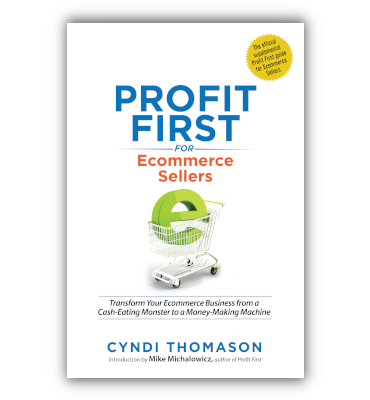Start by doing what is necessary; then doing what is possible; and suddenly you are doing the impossible. — St. Francis of Assisi
I know what it feels like to be working in your business nonstop. Before I started Clockworking my business, there weren’t enough hours in the day. I recall looking out the window of my office, wanting to be in my garden and feeling like I’d never get out there again. Tears just ran down my face.
Time is a Variable You Can Control
Time is one of the most important variables you control in the business equation. I’ve learned that by focusing on less, you can accomplish more. I made two decisions that day, staring out that window, and it changed everything:
First, I defined my QBR (Queen Bee Role)–
- The QBR is my most important role in the business. I only focus on those items that fit my QBR and then I let everything else go.
- I Trashed, Trimmed, Transferred.
- I only kept what was in my Queen Bee Role.
Next, I set the date for my first 4-week vacation–
- After I set the date, I approached everything I did from the standpoint of who would do it while I was gone for a month. I said to myself, “This is the last time I’m doing this task, so let me document and train the new owner.” This took 18 months to prepare for the time away – because it was not just me – it was me and my husband; the entire C-suite! And once we left, we totally disconnected. We didn’t even talk to the team!
Six Strategies to Get Your Time Under Control
Here are six strategies that really helped me get to that 4-week vacation. They are a combination of concepts from SCALE by David Finkel and Clockwork by Mike Michalowicz.
#1. Identify what you do that truly creates value for your business. This is your QBR (Queen Bee Role), like I’ve mentioned before. Think of it like the 80/20 rule. What do you spend 20% of your time on that yields 80% of the results you want?
#2. To find time for the important activity, focus on what you can Trash, Trim, Transfer. Trash it if it doesn’t support the necessary objective of the business. Does it add measurable value to your client or your team? If you’re unsure, just stop doing it and see if there are consequences. For the things you must keep on your own to-do list, ask yourself if there are ways you can Trim it – get it done faster, more easily? And finally, Transfer what you can to other people or automation systems. Always transfer to the most inexpensive resources and always transfer the ownership, not just the project. Task them with achieving the outcome more efficiently. In that way, you are transferring and they are trimming!
In this phase, you are moving through the 4 D’s of your business:
- Doing – where you’re the technician doing the work.
- Deciding – where others help you do the work, but they rely on you for any decisions.
- Delegating – where you truly let someone else own the task and you live with their results – good and bad. This stage is the only way you get more time to do the next phase.
- Designing – Where you work on creating the business you want.
#3. Structure your week so that you focus on the activities that drive value. Don’t clutter your days with the unimportant busy work. If you don’t’ structure your weeks to work on the important work, then you’ll end up doing the busy work. It’s always there, and it’s satisfying to think you can “knock it out!” But did you really move your business forward? Use the time you freed up by trashing, transferring and trimming so you can now focus on the important stuff you kept on your list.
Create Focus Days and get out of your normal environment to work on the highest leverage, highest value and highest return part of your business. Turn off phones and chat/IM and email notifications. Start with 3-4 hours and work up to the entire day. Monday and Friday can typically be bad Focus days, but your business might not follow the typical 5-day week. Enlist your assistant and your team – they will understand and guard your time. Once you see how well this works, you may suggest that your team take focus days, too. Focus days don’t have to be alone days. They can be days where you meet with team members or suppliers or clients. The purpose of these meetings is what matters; you are working on the design phase of your business.
#4. Work above the line first, then continue below the line. Each day, pick the top three things you want to accomplish, write them down and draw a line below them, with everything else appearing below the line. Always get the items above the line done first. Live by the RESULTS Rule – if by 10:30 am you haven’t completed them, schedule a time on your calendar. This forces you to do what matters most first! Then move along to the other items.
#5. Every Push Day, Schedule some Prime Time. Block 60-90 minutes every day during your most productive time to work on your top three items. This will allow you to keep things moving along. Put this on your calendar, don’t take calls and distractions, such as email.
Structure your week to have two Focus Days where you work on the business doing the important work – Design work. Then have two Push Days that you work in the business – Doing Deciding, Delegating. Finally, Friday is your 3R day, Relationships, wRap up, Reviewing and planning next week.
#6. Create a Stop Doing list and add to it weekly. Don’t’ do the Trim Trash Transfer Exercise once and then call it done. Look at your list weekly. What didn’t get done – apply the TTT filter and see if you can get it off your list permanently.
Time Blocks Help Manage Your Focus
These are not huge changes – you can do them by having someone help with accountability and by controlling your environment. I was a slave to email and Facebook notifications, so I took email off my phone and my notifications are off for Facebook and Messenger. I check it when it’s on my schedule.
Here is how my time block looks each week – I complete my weekly plan every Sunday night or early Monday morning before my accountability group call.
| Weekly Structure- goes on my Calendar | |||||
| Above the Line Goals | 1. 2. 3. |
||||
| Monday – Push Day |
Tuesday – Focus Day |
Wednesday – Push Day |
Thursday – Focus Day |
Friday – R3: Relationships, wRap up, Review/Plan |
|
| EE Calls | |||||
| Client Calls | Client A 3pm | ||||
| Email Responses | |||||
| Marketing/ Book/Course |
Marketing Team mtg 11am | ||||
| Prime Time 9-10:30am |
Work offsite | Prime Time 9-10:30am |
Work offsite | ||
| General Tasks |
Structure Your Time and Get Your Life Back
By identifying my QBR, getting serious about Trimming, Trashing, Transferring, Delegating and Designing, and structuring my week so I worked on the high value activities that only I could do, I was able to take a 4-week vacation and my business and my team thrived while I was away. I’ve taken one every year and my next one is coming up in a May. Even better, I have my life back. I don’t have to work all the time. Now, I spend time in the garden and traveling and enjoying my family again. I know you can use these same steps to create your business so it serves you and doesn’t deplete your most valuable resource – Time.
Interested in Profit First for Ecommerce Bookkeeping?

You can also sign up for the Profit First for Ecommerce Sellers Online Course. As a Mastery Level, Certified Profit First Professional, I will teach you why Profit First works so well for ecommerce businesses and the particular challenges for businesses that have physical products requiring inventory management. You will learn how your behavior drives your money management habits for your business and how you can set up your business bank accounts to work with your habits. Contact bookskeep today to learn more about ecommerce bookkeeping and accounting.





Leave a Comment